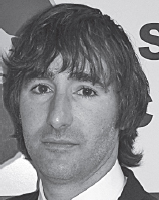Tony Mirabelli, Learning to Serve: The Language and Literacy of Food Service Workers
Chapter 2: Individual in Community: How Do Texts Mediate Activities?

Learning to Serve: The Language and Literacy of Food Service Workers
TONY MIRABELLI

Mirabelli, Tony. “Learning to Serve: The Language and Literacy of Food Service Workers.” What They Don’t Learn in School. Ed. Jabari Mahiri. New York: Peter Lang, 2004. 143–62. Print.
Framing the Reading
Tony Mirabelli earned a Ph.D. in Education in Language, Literacy and Culture from the University of California–Berkeley in 2001 and is currently the coordinator of the Athletic Center’s Tutorial Program at that same school. He is also a lecturer in the Graduate School of Education there.
Mirabelli’s essay, much like Wardle’s article, employs theories about language use in communities to examine how workers in a diner interact through language and texts. While Wardle looks at a white-collar worker, Mirabelli is interested in the language and literacy practices of blue-collar service workers. In fact, he introduces the concept of multiliteracies to argue that these workers do not just read texts: They also read people and situations.
If you read James Paul Gee, also in the e-pages, this argument should be familiar to you. Gee argues that there is too much focus on textual literacies and that print-based literacies cannot be separated from what he calls the “saying (writing)-doing-being-valuing-believing” within Discourses. The connection between Gee and Mirabelli is not accidental. Mirabelli relies on assumptions from an academic area called New Literacy Studies, which Gee was instrumental in establishing. As you might expect, knowing this, Mirabelli cites Gee when defining his theoretical terms. (And if you look at the publication information for the book in which Mirabelli’s article originally appeared, you’ll find that Gee reviewed that book for the publisher.)

We recommend that, if you’ve read other pieces in this chapter, you treat Mirabelli as an opportunity to “gather up” the concepts you’ve already encountered in those writings; a lot of them seem to come together in Mirabelli’s analysis. For example, his work draws quite directly on Swales’s definition of discourse community, and you can see how his ideas work with and against what you might also have read in Wardle. As such, Mirabelli’s very rich analysis of a particular activity system, which Kain and Wardle explained earlier in this chapter, is an opportunity for you to test the ideas you’ve been working on throughout the chapter.